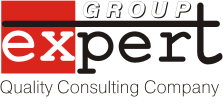| Section: |
7.2.2 §4 |
Section Title: Requirement Changes |
| 9100 Clause |
Review of Requirements Related to the Product: The organization shall review the requirements related to the product. This review shall be conducted prior to the organization's commitment to supply a product to the customer (e.g. submission of tenders, acceptance of contracts or orders, acceptance of changes to contracts or orders) and shall ensure that:
Where product requirements are changed, the organization shall ensure that relevant documents are amended and that relevant personnel are made aware of the changed requirements. |
| Generic Expectation |
The organization processes shall ensure adequate understanding of any changes and change management requirements when initiated by the organization or the customer. This includes change acceptance, status accounting, method, timing and approval of change. Changes can include product definition, contractual document terms and conditions, delivery requirements or associated specifications. There should be a clear understanding between the customer and supplier as to the definition of a change. |
| Product Type: |

COTS/Standards |

Raw Material |

Build-to-Print |

Supplier Design |
| Specific Expectation |
Organization (Buyer) |
AS9100 See 7.4.2 Purchasing Information (d & h) |
| Supplier (Seller) |
Typically not applicable to product definition since Buyer has no or little control over product configuration. Would only apply to contractual documentation terms and conditions and delivery requirements. Should follow same process as AS9100 7.2.2 Review of Requirements Related to the Product. |
Typically product is defined by specification and may or may not be an industry standard. Would only apply to contractual documentation terms and conditions and delivery requirements. Should follow same process as AS9100 7.2.2 Review of Requirements Related to the Product. Could be a revision to a specification in which case the Buyer has to declare which specification and revision are applicable to the order and when the order takes effect. |
Could be any number of methods. There could be a change to a product specification, method of manufacture, engineering definition, or contractual documentaion terms and conditions. Supplier should understand the change effects (price, quality and delivery) and re-commit / quote the change effects back to the Buyer. Effectivity and contractual documentation alignment need to be ascertained between buyer and supplier before an change is implemented. Agreement needs to be by documented method via the Buyer Procurement process. |
Could be any number of methods. There could be a change to a product specification, method of manufacture, engineering definition, or contractual documentation terms and conditions. Supplier should understand the change effects (price, quality and delivery) and re-commit / quote the change effects back to the Buyer. Affectivity and contractual documentation alignment need to be ascertained between buyer and supplier before an change is implemented. Supplier is to have an internal change control system for design impacts and analysis per AS9100 7.3.7 Control of Design and Development Changes. Agreement needs to be by documented method via the Buyer Procurement process. |
| Documentation to demonstrate conformance to expectation (what the auditor would look for) |
Organization (Buyer) |
Contractual documentation Amendment / Change Order. |
| Supplier (Seller) |
Internal or Customer acknowledgement form or process to show that customer and supplier are in agreement of change. |
Internal or Customer acknowledgement form or process to show that customer and supplier are in agreement of material specification and condition. |
Internal process for the review of customer requirements prior to acceptance of contractual documentation amendment. May include document that shows changes from customer requirements for the order and internal process owner acknowledgement that new requirements can be met. Some customers link requirements on Web Sites or other online locations. Acknowledgement that these sites have been checked and verified for latest information is important. |
Internal process for the review of customer requirements prior to acceptance of contractual documentation amendment. May include document that shows changes from customer requirements for the order and internal process owner acknowledgement that new requirements can be met. Some customers link requirements on Web Sites or other online locations. Acknowledgement that these sites have been checked and verified for latest information is important. Supplier change management and evaluation per AS9100 7.3.7 Control of Design and Development Changes is required. |
| Examples (Best Practices) |
Organization (Buyer) |
Contractual documentation Amendment for all changes, including specifications, terms and conditions and supplier suggested changes. |
| Supplier (Seller) |
Response to customer with information regarding change to item to be supplied and terms and conditions being agreed upon prior to shipping changed items. |
Response to customer with information regarding change to item to be supplied and terms and conditions being agreed upon prior to contractual documentation acceptance. Contractual documentation Amendment to follow same process as new contractual documentation. Affectivity and implementation of change agreed with the customer prior to shipment of change. |
